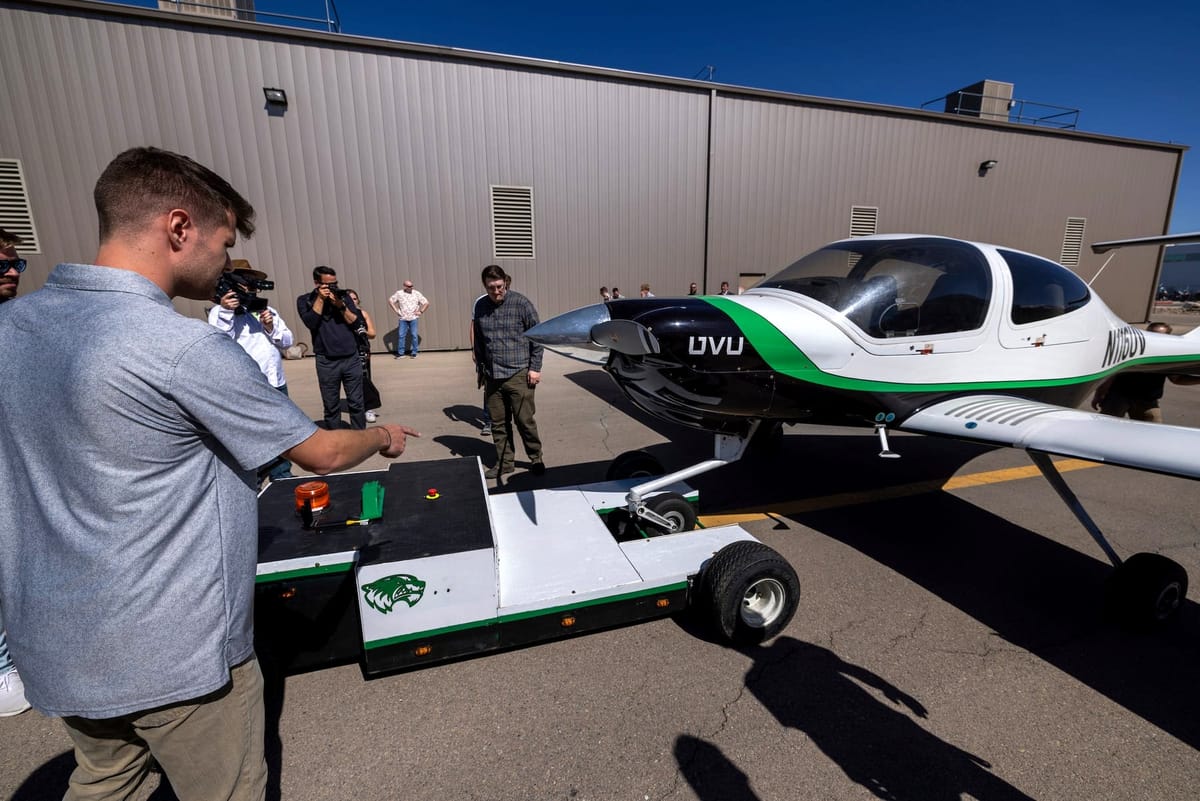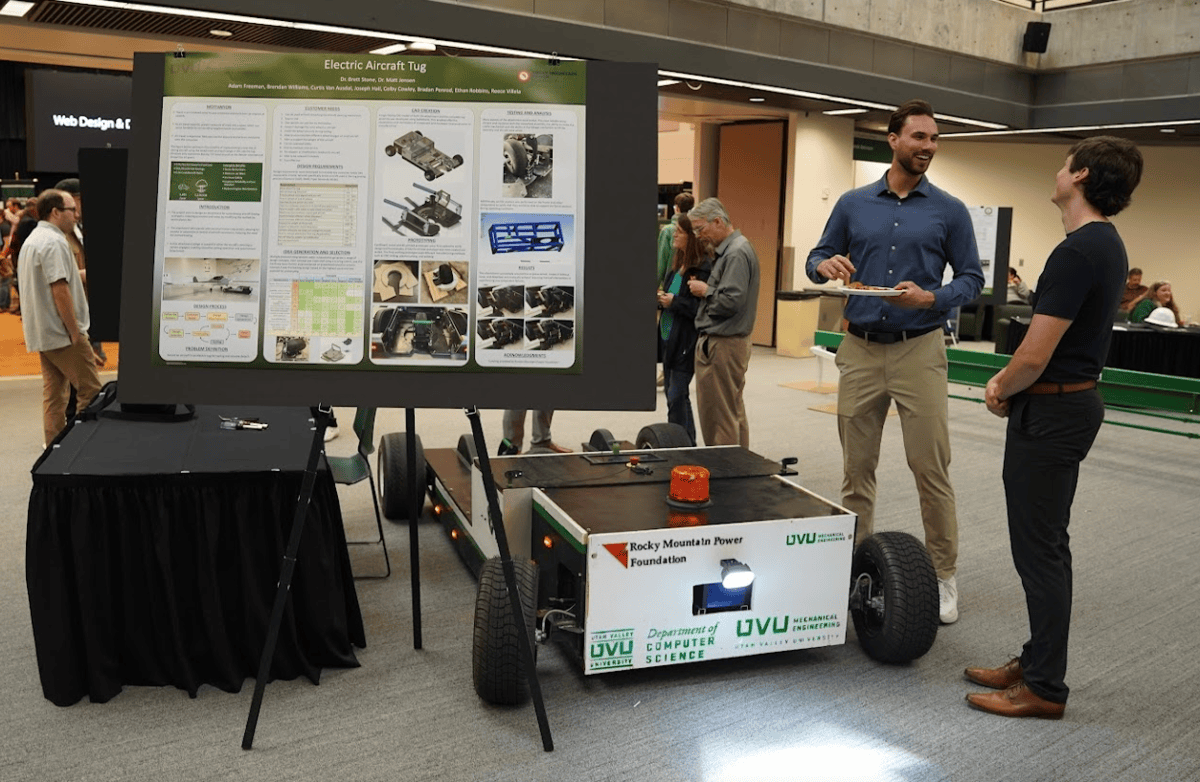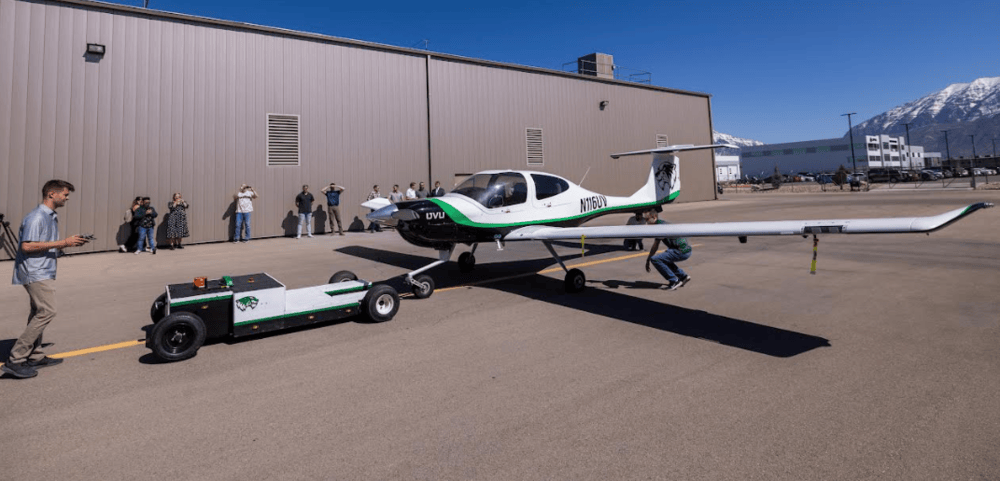

Provo, Utah - June 2, 2025
A student-led team at Utah Valley University (UVU) has developed a second-generation autonomous electric aircraft tug, aiming to reduce fuel consumption, lower emissions, and enhance safety in airport operations. The prototype, recently demonstrated at Provo Airport, features significant upgrades, including a hands-free coupling and decoupling system, remote-control operation via cellular datalink with a live video feed, and a redesigned drivetrain for improved performance and efficiency.
Dr. Brett Stone, UVU mechanical engineering professor and former Northrop Grumman design engineer, commented, “The latest redesign has taken the tug to the next level. Months of brainstorming, testing, and labor have paid off, and it’s thrilling to show people how it works.”
Addressing Fuel Consumption and Safety Concerns
Traditionally, aircraft taxiing consumes a notable amount of fuel. For instance, a Boeing 737 can burn approximately 600 kg (about 158 gallons) of fuel per hour while taxiing. UVU's electric tug offers a sustainable alternative, potentially saving airlines significant fuel costs and reducing emissions. Beyond environmental benefits, the tug enhances airport worker safety by minimizing the need for personnel to be near active jet engines during ground operations.
Mechanical engineering student Bradan Penrod shared, “The attachment mechanism was one of the toughest challenges, requiring precision and problem-solving. As a mechanical engineer, learning the electrical systems was also a steep curve, but working with others made it easier. The hands-on experience working on the tug has definitely prepared me for the workforce.”

Recognition and Future Applications
The project, initiated by Professors Brett Stone, Matt Jensen, and George Rudolph, involved two teams of eight mechanical engineering and four computer science students over two semesters. Supported by a $15,000 grant from the Rocky Mountain Power Foundation, the innovation secured first place at the ACRP University Design Competition in 2024, earning an additional $3,000 award. With patents pending, discussions about commercial applications are underway.
Looking ahead, UVU plans to scale the tug for larger regional jets like the Embraer and Canadair, and eventually for aircraft such as the Boeing 737 and Airbus A320. Additional applications include autonomous towing for baggage trains and snowplows, with flexible operating modes: pilot-controlled, remote-operated, or fully autonomous.
Professor Stone expressed optimism about the project's trajectory, stating, “The technology is proving that student-led innovation can redefine aviation sustainability.”

Find out more about programs of UVU's Smith College of Engineering and Technology here.

